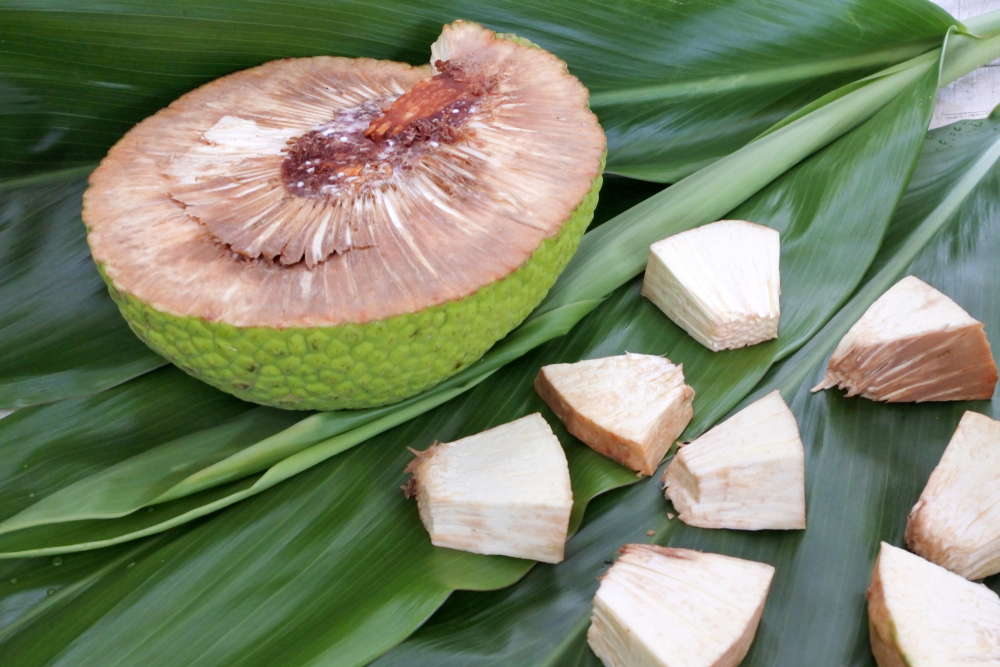Introduction to the Desserts of the Pacific Islands
The Unique Sweetness of Oceania’s Culinary Heritage
The Pacific Islands are home to a rich culinary heritage, a hidden gem in the world of desserts. Each island boasts its own collection of sweet treats that reflect the region’s unique culture, climate, and history. From traditional preparations passed down through generations to contemporary desserts that have evolved with outside influences, the sweetness of Oceania’s culinary offerings is as diverse as its landscape. Encompassing flavors from the rich coconut groves, abundant tropical fruits, and native roots like taro and cassava, Pacific Island desserts are both a delight to the senses and a testament to the islands’ bountiful natural resources.

Traditional Desserts from Various Pacific Islands
Hawaiian Haupia – A Coconut Milk Delight
Hawaiian Haupia is a traditional coconut milk-based dessert often found at luaus and Hawaiian feasts. It is a simple but luxurious dish, primarily made of coconut milk thickened with arrowroot or cornstarch into a gelatin-like consistency. Typically served in blocks, Haupia has a smooth, creamy texture and a light, tropical flavor that makes it a refreshing finale to any meal. This dessert captures the essence of the islands in every bite and is emblematic of Hawaii’s love affair with coconut.
Samoan Panipopo – Sweet Coconut Buns
Originating from Samoa, Panipopo is a beloved dessert featuring sweet, fluffy buns drenched in a rich coconut cream sauce. The name Panipopo literally means “coconut buns,” a nod to the signature ingredient that gives this dessert its distinct flavor. The buns are baked until golden and then soaked in a coconut sauce made from the creamy milk of freshly grated coconuts, delivering a moist and decadent experience. This dessert is not just a treat for the palate but also an embodiment of Samoan hospitality and generosity.
Fijian Cassava Cake – A Staple Sweet Treat
Cassava Cake, a staple in Fijian cuisine, celebrates the widespread use of cassava root in the Pacific Islands. This hearty dessert blends grated cassava, a starchy tuber, with coconut milk and sometimes a hint of vanilla to create a dense, slightly chewy cake. Often enjoyed during community gatherings and special occasions, Fijian Cassava Cake showcases the adaptability and importance of cassava as a crop and the comforting, homestyle essence of Fijian dessert traditions.
New Zealand Pavlova – A Meringue-Based Dessert
The New Zealand Pavlova is a meringue-based confection that is crisp on the outside and marshmallow-soft on the inside, often topped with fresh whipped cream and an assortment of fruits. Named after the Russian ballet dancer Anna Pavlova, who visited New Zealand in the 1920s, this dessert has become a national symbol and a source of friendly rivalry between New Zealand and Australia, both of which claim its origin. The Pavlova is a celebratory dish, reflecting the lightness and freshness of the Pacific with its combination of airy meringue and vibrant, local fruit toppings.
Australian Lamingtons – Sponge Cake Squares
A cornerstone of Australian pastry, Lamingtons consist of squares of vanilla sponge cake dipped in chocolate icing and rolled in desiccated coconut. Originating from Queensland, Lamingtons are said to be named after Lord Lamington, a former Governor of Queensland. These delightful little cakes are a study in texture and taste, offering a satisfying contrast between the light sponge, the rich chocolate coating, and the coconut’s nutty crunch. Lamingtons are a cherished treat enjoyed at all sorts of gatherings, from morning teas to grand celebrations.

Exploring Island-Specific Ingredients in Desserts
The Role of Tropical Fruits and Nuts in Island Desserts
Tropical fruits and nuts play a significant role in the flavors and textures of Pacific Island desserts. Ingredients like coconuts, pineapples, bananas, and macadamia nuts are not just key components; they encapsulate the islands’ volcanic soil’s lushness and fertility. These fruits and nuts lend natural sweetness, aroma and provide a rich source of fats and nutrients making them ideal for incorporating into desserts. They are used in various ways, from raw, ripe fruits garnishing cakes and sweets to roasted nuts adding crunch and depth to pastries and confections. These island-specific offerings are central to not only dessert recipes but also to the agricultural and economic landscape of the Pacific Islands.
Utilizing Local Produce like Taro and Cassava
In the Pacific Islands, local produce such as taro and cassava are more than mere side dishes; they form the cornerstone of both savory and sweet culinary traditions. Taro, with its starchy corm and leafy greens, is revered for its versatility and nutritional properties, often found in puddings and cakes. Similarly, the cassava root, with its high carbohydrate content, provides energy and substance, transforming into cakes, pastries, and sweetened snacks. Utilizing these locally grown staples reflects a sustainable approach to cooking and eating, closely tied to the islands’ ecosystems and cultural practices. These indigenous crops contribute significantly to the textures and flavors distinctive to Pacific Island desserts.
Modern Twists on Traditional Pacific Island Desserts
Contemporary Variations and Fusion Recipes
As culinary borders blur, traditional Pacific Island desserts are reimagined with modern twists. Contemporary chefs and home bakers are creating fusion recipes combining classic dessert elements from Oceania with techniques and ingredients from around the world. Chocolate, matcha, or even salted caramel find their way into traditional recipes, creating a vibrant palate of flavors that speak to both the rich history and evolving tastes of the Pacific. These innovative variations breathe new life into time-honored dishes, celebrating the progressive and inclusive spirit of the islands’ food culture.
Adapting Classic Desserts for the Modern Palate
Pacific Island desserts are not immune to adaptation in a world where dietary preferences and restrictions are ever-changing. Health-conscious revisions of classic sweets might feature alternative sweeteners such as honey or agave, or gluten-free flours to accommodate sensitivities. Non-dairy coconut cream is already a staple in many traditional desserts, making them accessible to those avoiding dairy. By adapting these classic desserts to meet the modern palate, the essence of the recipes is preserved while making them enjoyable for a wider audience and ensuring the longevity of the islands’ dessert traditions.
Preparing and Enjoying Island Desserts at Home
Step-by-Step Recipes for Iconic Desserts
Bringing a taste of the Pacific into your kitchen can be a delightful adventure with the help of step-by-step recipes for iconic desserts. Whether you’re craving the creamy texture of Haupia, the spongy delight of Lamingtons, or the hearty sweetness of Cassava Cake, detailed recipes with clear instructions make these exotic treats attainable. Aspiring home cooks can now replicate the authentic flavors and aromas of Oceania’s treats, connecting with far-off cultures and cuisines through the universal language of sweets.
Tips for Achieving Authentic Flavors
To truly capture the essence of Pacific Island desserts, achieving authentic flavors is key. This often involves sourcing specific regional ingredients like fresh coconuts, Pacific vanilla beans, or taro root. Experimenting with the right balance of sweetness, understanding the importance of texture, and respecting the simplicity of traditional methods all contribute to the authenticity of the final product. Additionally, embracing the concept of ‘mana,’ which refers to the spiritual energy in all ingredients and the process of cooking, is believed to infuse desserts with the soul of the islands.
The Cultural Significance of Desserts in Pacific Island Celebrations
Desserts in Festivals, Feasts, and Family Gatherings
In the Pacific Islands, desserts are not merely sweet confections; they hold a place of honor at festivals, feasts, and family gatherings, symbolizing sharing and celebration. Sweets like Haupia in Hawaii or Pavlova in New Zealand carry cultural weight, playing a role in preserving traditions and fostering communal bonds. The shared enjoyment of these treats during significant events reinforces the sense of identity and belonging among island communities, with intricate recipes and serving customs often passed down through generations as a form of cultural heritage.
Pairing Island Desserts with Beverages
Coffee, Tea, and Traditional Drinks to Complement Sweet Treats
The art of dessert pairing extends to the beverages that accompany the sweet treats of the Pacific Islands. Coffee, tea, or traditional drinks such as kava or noni juice can complement the distinct flavors of the desserts. The rich, bold flavors of Pacific coffee or the delicate notes of island-grown tea can enhance the complexity of desserts like Lamingtons or Cassava Cake. Traditional beverages, with their unique profiles, can provide a glimpse into the heritage of the islands and offer a complete and immersive taste experience.
FAQs on Pacific Island Desserts
What Makes Pacific Island Desserts Unique?
Pacific Island desserts stand out due to their unique combination of local ingredients, traditional methods, and the cultural significance they hold. Ingredients like fresh coconut, taro, and tropical fruits are essential, providing distinct flavors and textures. Moreover, the desserts often tell a story of the islands’ history and people, and their preparation involves techniques passed down through generations, which adds to their uniqueness and appeal.
Where Can I Find Authentic Pacific Dessert Ingredients?
Authentic Pacific dessert ingredients can sometimes be found in local markets or specialty stores, particularly those that sell Asian or Polynesian food items. For those living outside the Pacific region, online retailers and import stores are often the best places to find items like fresh taro root, pure coconut cream, or specific tropical fruits. Checking with local Polynesian communities can also yield recommendations for finding authentic ingredients.
Can I Make Pacific Desserts if I’m on a Special Diet?
Yes, many Pacific Island desserts can be adapted to suit special diets such as gluten-free, dairy-free, or vegan lifestyles. For instance, the use of coconut milk in many recipes naturally makes them dairy-free, and gluten-free flours can be used for baking. It’s about substituting ingredients without compromising on flavor or texture – and with an abundance of fresh fruits and other natural sweeteners, you can still enjoy the essence of Pacific desserts.
Are Pacific Island Desserts Suitable for Diabetics?
While traditional Pacific Island desserts may be rich in natural sugars, many can be modified to suit a diabetic diet. The key is to use sugar substitutes like stevia or to reduce sugar quantities and rely on the natural sweetness of fruits. Portion control is also essential. However, it’s advised to consult with a healthcare professional before consuming or adapting any dessert recipes for specific health conditions.
How Can I Ensure My Desserts Have Authentic Pacific Flavors?
To ensure your desserts have authentic Pacific flavors, use the freshest, highest-quality ingredients possible and follow traditional recipes. Studying the dessert-crafting methods of Pacific Island cultures and respecting the simplicity and proportions of the ingredients are also crucial. Additionally, infuse your cooking process with ‘mana,’ making your experience as much about the heart and spirit as it is about culinary skill.
What Are Some Common Techniques in Pacific Dessert Preparation?
Common techniques in Pacific dessert preparation often involve baking, steaming, and boiling. For instance, many desserts utilize the ‘earth oven’ or ‘umu,’ a traditional cooking pit where food is slow-cooked over heated rocks. Other techniques include the use of banana or taro leaves for wrapping items before cooking, adding a nuanced flavor. The blending and thickening of coconut milk for puddings and custards are also staple methods in the Pacific dessert repertoire.
